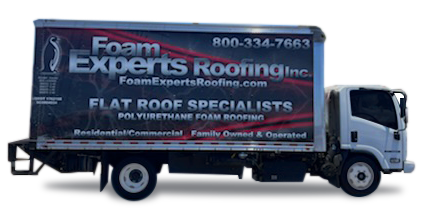Foam roofs offer numerous advantages as a roofing solution, including fire resistance, durability and energy savings.
Foam roofs require regular maintenance to avoid weather damage and mold growth, yet repairs can easily be accomplished by homeowners with the appropriate tools and supplies.
High Spots or Blisters
Foam roof spraying can result in high spots or blisters being formed on roof surfaces as a result of air or water becoming trapped within the foam as it’s applied, leading to air or water being trapped by it during application.
Roof blisters are often the result of excess moisture entering the roof, leading to moisture being drawn inside where it can pool and cause further issues. As soon as one occurs, repair should take place as soon as possible as it can lead to serious leakage issues in future.
Blisters can often form in gaps between membrane plies or between an underlying substrate and your roof’s membrane, and if left untreated these pockets could expand and crack causing extensive damage to your membrane and roof.
Assure proper adhesion between roofing materials for best results when trying to avoid blistering by selecting dry materials in dry environments and making sure there is firm contact between materials so adhesion works properly.
Small Holes
Spray foam roofs are closed-cell systems, meaning when a hole develops in them, water won’t escape but rather remain within the hole and not move downslope or elsewhere.
However, even small holes can still cause water damage because water enters through them and penetrates insulation layers.
To avoid this situation, it’s essential that your roof be repaired as quickly as possible so as to give you enough time before water damages the foam layer and causes further issues.
Signing a maintenance contract with a reliable roofer like Foam Experts Roofing is the ideal way to ensure that your foam roof remains undamaged. A trained professional will inspect it twice annually.
Worn Out Acrylic
Foam roofs that feature acrylic coating can become compromised over time, allowing water to seep through. This may happen from falling trees, intense storms or even carelessly dropping hand tools damaging its top coating.
If the acrylic roof coating has become damaged, it must first be repaired or re-coated before protection can be reapplied. Our Phoenix roofers offer foam roof restoration to its original state before applying a fresh coat.
Silicone and acrylic coatings both deflect UV rays to protect foam roof materials from sun damage, with acrylic being more resistant than silicone in terms of both UV protection and moisture resistance. Silicone on the other hand has excellent UV/water resistance qualities.
Ponding
Foam roof repairs may lead to pockets of ponding water that cause lasting damage to membrane or coating systems on roofs.
Ponding water can also make your roof more susceptible to leakage down the line as it breaks down materials more rapidly, leading to faster wear and tear on its materials.
Untreated ponding water can quickly lead to mold and mildew growth on your roof, which in turn could cause significant structural damage that will ultimately cost more in repairs in the long run.
Proper installation of a foam roof can help stop ponding water from pooling on roof surfaces, but if this ponding occurs due to other sources, such as collapsing insulation or low spots in your structure, replacement may be required for complete roof systems.
Dry Rot
Dry rot can quickly spread to brickwork and plastering within your home and threaten its structural integrity, threatening its structural integrity and potentially weakening it. Without prompt attention and repair, this problem could prove devastating to its vulnerable load-bearing timbers in your roof and weaken its foundation.
Dry rot can be an unappealing and costly issue for homeowners. While it can be challenging to spot early symptoms, there is still a way to identify if you have a dry rot problem in your home.
Once you identify the issue, it’s vital that you identify why the wood is rotting – this could be as straightforward as a water leak or as complex as penetrating dampness or poor ventilation.
The key is not to try to install a foam roof yourself and always hire trusted Foam Roof Experts like our team at Foam Experts Roofing in Arizona















